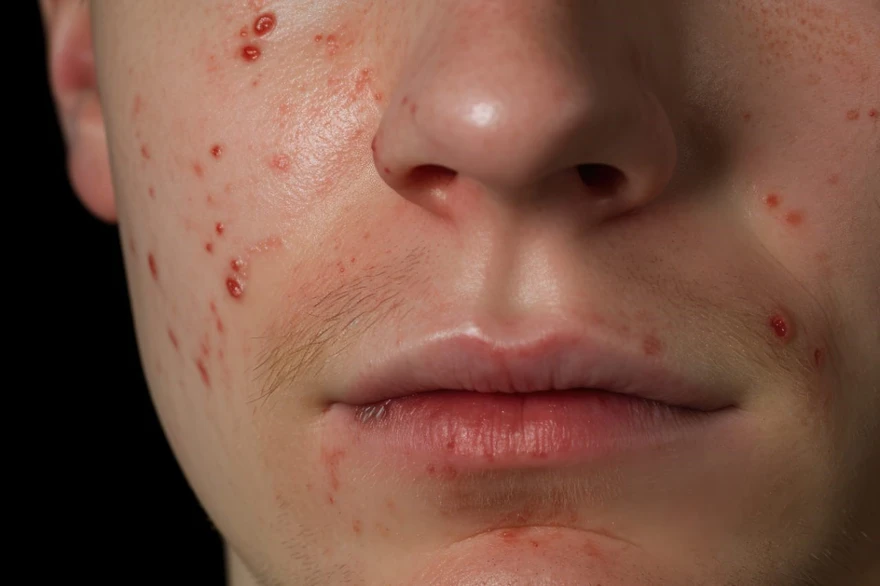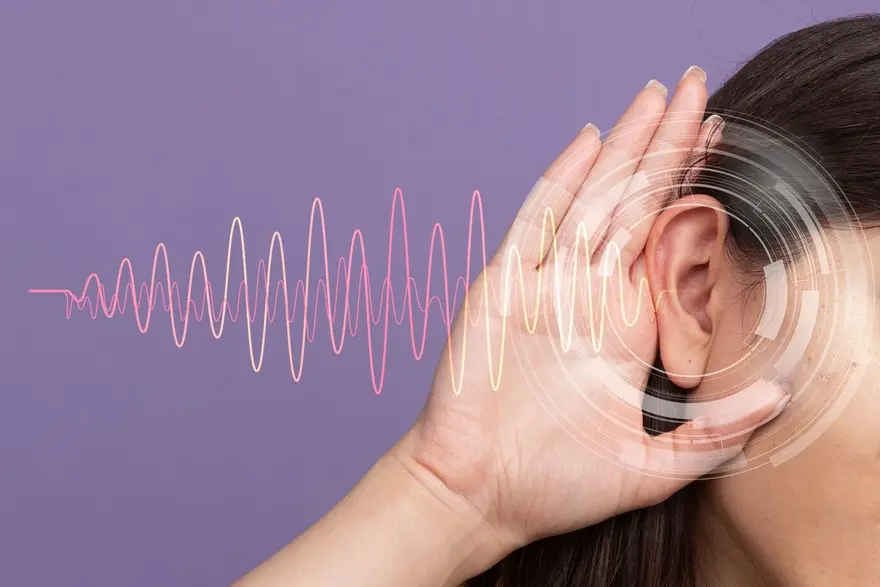Preventive Healthcare
Sebaceous Cysts (Epidermal Inclusion Cysts): Symptoms, Causes & Treatment
929 Views
0

What is a sebaceous cyst?
Ever discovered a strange round bump beneath your skin surface that feels like a lump? This might be what health experts call an epidermal inclusion cyst or a sebaceous cyst.
An epidermal inclusion cyst is a common and harmless skin bump that forms when skin cells pile up in one area under the dermis. These cysts are filled with a thick, keratin-like substance and can appear anywhere on the body, mostly found on the face, neck, and trunk. The name "sebaceous cyst" can be misleading as these cysts do not originate from sebaceous glands.
Epidermal inclusion cysts can develop due to skin injuries, blockages in hair follicles, or congenital factors. While they are generally asymptomatic, they may become inflamed or infected, leading to discomfort. Treatment is often unnecessary unless the cyst becomes painful or bothersome; in such cases, healthcare providers may recommend drainage or surgical removal. Understanding the causes of epidermal inclusion cysts is essential for proper diagnosis and management, distinguishing them from other skin lesions.
How common are epidermal inclusion cysts (sebaceous cysts)?
You might be surprised to learn that epidermal inclusion cysts are the most common type of skin cyst. Because of this, it's normal to see one or know someone who has one.
What does an epidermal inclusion cyst (sebaceous cyst) look like?
An epidermal inclusion cyst appears as a round bump or dome-shaped lump on the skin. Since, sebaceous cyst symptoms may vary from person to person.
Here's what you might notice:
- A dark dot in the centre of the cyst
- Skin discolouration around the area
- Tenderness or warmth when touched
- The size ranges from as small as 0.25 inches to more than 2 inches
What are epidermal inclusion cysts (sebaceous cysts) filled with?
Epidermal inclusion cysts are filled with thick, cheesy, malodorous substance consisting of keratin and cell debris, not sebum. These cysts are form when the epidermal cells grow in a small space in the dermis.
Is an epidermal inclusion cyst (sebaceous cyst) painful?
Most epidermal inclusion cysts aren't usually painful unless they become inflamed or rupture (break open). In such cases, you may experience symptoms like skin irritation, pain or itching at the site of the cyst. It's highly recommended to see your healthcare provider if you develop pain near the cyst or experience other concerning symptoms.
Where do epidermal inclusion cysts (sebaceous cysts) form?
Epidermal inclusion cysts can form anywhere on your body but are most frequently found in areas like:
- Face
- Chest
- Back
- Scalp
- Neck
- Legs
- Arms
- Genitalia
These areas provide optimal conditions for cyst growth due to their high concentrations of hair follicles.
What causes an epidermal inclusion cyst (sebaceous cyst)?
An epidermal inclusion cyst, often incorrectly called a sebaceous cyst, forms when skin cells multiply in a small pocket under the skin instead of shedding naturally. These cysts can develop due to a blocked hair follicle or skin trauma, causing cells to build up and form a sac filled with keratin, a protein that makes up the skin, hair, and nails.
Sebaceous cyst causes due to damage from cuts, surgical wounds, or conditions such as acne that block hair follicles. Certain genetic conditions, like Gardner’s syndrome or basal cell nevus syndrome, can also increase the risk of getting these cysts. Although they are usually harmless, an epidermal inclusion cyst can become inflamed or infected, leading to redness, swelling, and discomfort. Maintaining a good hygiene and skincare can help minimise sebaceous cyst causes.
What are the risk factors for epidermal inclusion cysts (sebaceous cysts)?
Although epidermal inclusion cysts can occur in anyone, certain factors increase your likelihood of developing them.
These typically include:
- Age: They are more common among individuals between 20-60 years
- Gender: More prevalent in individuals assigned male at birth (AMAB)
- Genetic conditions: Rare genetic conditions such as Gardner syndrome and Gorlin syndrome
- Medications: Certain medications like BRAF inhibitors, Imiquimod etc may increase your risk
Is an epidermal inclusion cyst (sebaceous cyst) contagious?
Rest assured, epidermal inclusion cysts are not contagious and cannot be spread from one person to another
What are the complications of an epidermal inclusion cyst (sebaceous cyst)?
Epidermal inclusion cysts are usually harmless, but they can sometimes can lead to certain complications. Such as if the cyst gets inflamed or infected, leading to swelling, pain, and skin discoloration. If a cyst ruptures, it can also swell and leak its contents.
In rare cases, malignancy (cancer) has been found in these cysts, including squamous cell carcinoma and basal cell carcinoma. If you notice a rapid cyst growth, significant pain or any other concerning changes in your cyst, it's crucial to consult your healthcare provider immediately.
Is an epidermal inclusion cyst a sign of cancer?
Epidermal inclusion cysts are usually benign and rarely harmful. However, in rare cases, malignancy or cancer can form within the cyst. It's important to consult your healthcare provider if you notice any changes with your skin or the cyst.
How is an epidermal inclusion cyst (sebaceous cyst) diagnosed?
Diagnosing an epidermal inclusion cyst (often called a sebaceous cyst) involves physical examination by a healthcare professional. The cyst usually looks like a small, round bump under the skin, often with a central opening or "punctum." It may feel firm and movable when pressed.
To confirm the diagnosis, the doctor may ask about the cyst’s history, such as when it first appeared and any changes in size or symptoms like pain or discharge. In some cases, an ultrasound or MRI may be recommended to distinguish it from other types of growths. If the cyst appears unusual or shows signs of infection, the doctor may perform a biopsy to rule out other conditions. Proper diagnosis ensures the appropriate treatment plan.
Should we see a specialist for an epidermal inclusion cyst?
An epidermal inclusion cyst isn't usually painful unless it gets inflamed or ruptures. However, If you notice changes like rapid growth or signs of infection such as redness, swelling, or leaking fluid, it’s best to see a healthcare provider. They may refer you to a dermatologist if needed.
How is an epidermal inclusion cyst (sebaceous cyst) treated?
Epidermal inclusion cyst or sebaceous cyst treatment typically depends on its size and symptoms. Small, painless cysts may not require treatment and can be monitored. If the cyst is painful, infected, or cosmetically bothersome, it can be drained or injected with a corticosteroid to reduce inflammation. Surgical removal is an option for recurring or large cysts.
Treatment for an epidermal inclusion cyst, also known as a sebaceous cyst, usually depends on its size and symptoms. Small, painless cysts may not need a treatment and can simply be monitored. If the cyst is painful, infected, or causes any cosmetic concerns, it can be drained or treated with a corticosteroid injection to reduce inflammation. Surgical removal is an option for larger or recurring cysts.
Epidermal Inclusion Cyst (Sebaceous Cyst) Removal
Epidermal inclusion cyst removal is usually done when the cyst is infected, painful, or cosmetically unappealing. The procedure is typically performed under local anesthesia in a doctor’s office. A small incision is made, and the cyst is carefully removed along with its entire sac to prevent prevent recurrence. If the cyst isn’t fully removed, it may regrow. For infected cysts, drainage or antibiotics may be needed before removal.
The procedure is generally quick, with minimal discomfort and scarring. Proper aftercare, including keeping the area clean and following the doctor’s instructions, helps ensure a smooth healing process and reduces the risk of recurrence.
Can sebaceous cysts be prevented?
Preventing sebaceous cysts may not always be possible because they can develop due to factors like genetics or certain medications. However, maintaining good hygiene and skin health might reduce the risk of developing these cysts.
What is the outlook for sebaceous cysts?
Sebaceous cysts are typically benign and mostly cause discomfort or cosmetic concern rather than serious health issues. If surgically removed, they're less likely to return. Rarely, an infection could develop at the removal site, requiring antibiotic treatment.
Does an epidermal inclusion cyst (sebaceous cyst) go away?
While some sebaceous cysts may shrink or disappear over time, others can persist and grow in size. It's important to monitor any changes and seek medical advice if necessary.
Can epidermal inclusion cysts get worse?
If left untreated, epidermal inclusion cysts could potentially become infected or rupture, causing symptoms like inflammation and pain. In such cases, immediate medical attention is required.
When to see a doctor?
If you notice a new skin lump or changes in an existing one, like rapid growth, signs of infection, or increased pain, it's a good idea to see a healthcare professional right away.
Is an epidermal inclusion cyst (sebaceous cyst) dangerous?
While epidermal inclusion cysts are typically harmless, there have been rare cases where cancerous changes were found inside them. Therefore, it's important to have any changes in your skin, such as growth, pain, or unusual features, checked by a healthcare provider.
Conclusion
While epidermal inclusion cysts (often called sebaceous cysts) can be a bit concerning due to their appearance and any discomfort they may cause, they are usually harmless and treatable. Understanding what these cysts are and knowing when to seek medical advice is essential for managing them effectively.
If you need a trusted partner in your healthcare journey or a reliable diagnostic provider for health check-ups, Metropolis Healthcare is here to help. With our advanced diagnostic labs and a qualified team of technicians offering at-home blood sample collection, we're dedicated to providing accurate results and personalized care right at your doorstep.
After all, prioritising your health is an integral part of living a fulfilling life.























 WhatsApp
WhatsApp